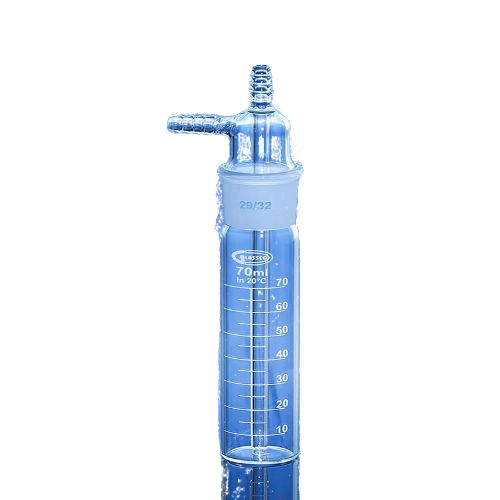The Greenburg-Smith Impinger is a scientific air sampling device used to collect airborne contaminants, such as dusts, aerosols, gases, or microorganisms, by bubbling air through a liquid medium. It is designed based on the impingement principle, in which airborne particles are trapped in a collection fluid due to inertial impact. This type of impinger is a glass instrument, typically composed of a narrow inlet tube that delivers air into a bulbous collection chamber, where the high-velocity air stream impacts the liquid surface, forcing particles into the liquid. The Greenburg-Smith design is particularly effective for collecting fine particulate matter and is used in occupational health, environmental monitoring, and industrial hygiene.
Feature of Impinger(Greenburg-Smith)
-
Highly effective at trapping fine and ultrafine particles
-
Allows for quantitative analysis of airborne substances
-
Compatible with a wide range of collection media (e.g., distilled water, acids, reagents)
-
Reusable and autoclavable
-
Transparent for easy visual monitoring of collection process
-
Used in combination with air sampling pumps or vacuum systems
-
Available with single or multiple impinger setups for serial sampling



There are no reviews yet.